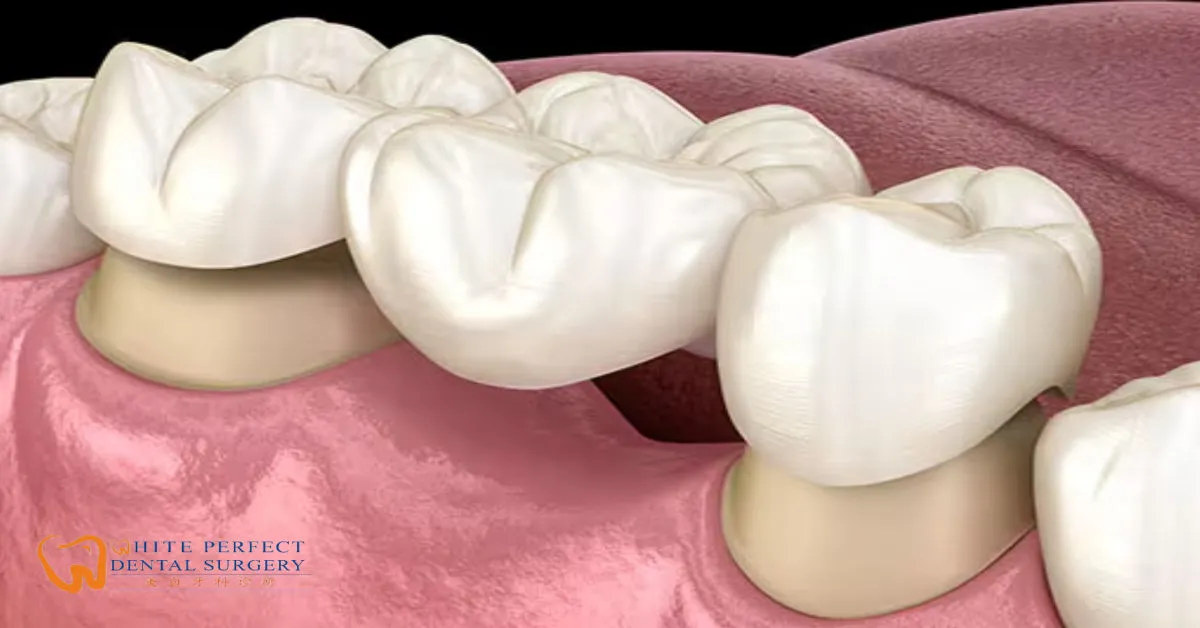

Welcome to White Perfect Dental, where your smile is our top priority. In this comprehensive guide, we’ll delve into the world of dental crowns and tooth bridges, essential components of restorative dentistry that can enhance both the aesthetics and functionality of your smile. Whether you’re seeking to repair damaged teeth or replace missing ones, our expert team is dedicated to providing personalized care and tailored solutions to meet your unique dental needs.
Dental crowns, also known as caps, are custom-designed coverings that encase damaged or weakened teeth, restoring their strength, shape, and appearance. These crowns can be fabricated from a variety of materials, including porcelain, ceramic, metal alloys, or a combination thereof, depending on the specific requirements of each case. Dental crowns are meticulously crafted to blend seamlessly with your natural teeth, providing both durability and aesthetic appeal.
Bridges are prosthetic devices used to replace one or more missing teeth, restoring both the aesthetics and functionality of your smile. These bridges consist of one or more artificial teeth, known as pontics, supported by dental crowns attached to adjacent natural teeth or dental implants. Bridges are custom-designed to fit seamlessly into your dental arch, providing a stable and long-lasting solution for tooth replacement.
Dental crowns and tooth bridges are suitable for individuals who:
The process of placing dental crowns and bridges typically involves multiple steps and may require several dental appointments.
Dental crowns and bridges are designed to be durable and long-lasting, with proper care and maintenance. On average, they can last between 10 to 15 years or more, depending on factors such as oral hygiene practices, material used, and general wear and tear.
The procedure for dental crowns and bridges is typically performed under local anesthesia to ensure that patients experience minimal discomfort. After the procedure, some mild soreness or sensitivity may occur, but this can usually be managed with over-the-counter pain medication.
Maintaining good oral hygiene practices, including regular brushing, flossing, and routine dental check-ups, is essential for the longevity of dental crowns and bridges. Avoiding habits such as teeth grinding or using your teeth as tools can also help prevent damage to the restorations.
Modern dental materials and techniques allow for the creation of dental crowns and bridges that closely resemble natural teeth in color, shape, and texture. When properly crafted and placed by a skilled dentist, crowns and bridges are virtually indistinguishable from natural teeth, ensuring a seamless and natural-looking result.
In the event that a dental crown or bridge becomes damaged or loose, it can often be repaired by a dentist. However, severe damage may require replacement of the restoration to ensure the continued health and functionality of the tooth or teeth. Regular dental check-ups allow your dentist to monitor the condition of your crowns and bridges and address any issues promptly to prevent further damage.
Dental crowns and tooth bridges are invaluable components of restorative dentistry, offering durable, functional, and aesthetically pleasing solutions for damaged or missing teeth. At White Perfect Dental, we are committed to providing exceptional care and personalized treatment options to help you achieve a healthy, beautiful smile. If you’re considering dental crowns or bridges, we invite you to schedule a consultation with our experienced team. Together, we can create a customized treatment plan tailored to your unique needs and goals, restoring your confidence and oral health for years to come.




Fissure sealant
Dental fillings
Root canal treatment
Tooth extraction
Wisdom tooth removal
Crowns & bridges
Branches & Operating Hours
Contact Information
Make an Appointment


Fissure sealant
Dental fillings
Root canal treatment
Tooth extraction
Wisdom tooth removal
Crowns & bridges
Branches & Operating Hours
Contact Information
Make an Appointment
Copyright © White Perfect Dental Surgery Sdn Bhd (Company No. 201001012274 (1000198-P)).
Website Managed by MYSense. All Rights Reserved.